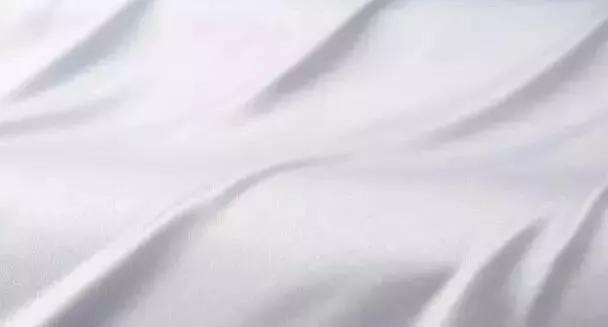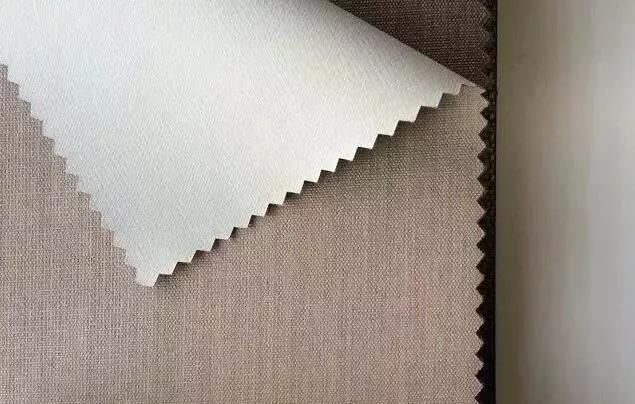How much do you know about the practical process of textiles?
Water repellent water-repellenting

Concept: Water-repellent finishing, also known as breathable waterproof finishing, that is, the process of using chemical water repellent to reduce the surface tension of the fiber, so that the water droplets cannot wet the surface.
Application: Waterproof materials such as raincoats and travel bags.
Function: easy to handle, low price, good durability, and the water-repellent fabric can still maintain its breathability, mainly used for cotton, linen, silk and synthetic fabrics. The water repellent finishing effect of the fabric is also related to the texture of the fabric.
Oil repellent textile oil-repellenting

Concept: Oil-repellent finishing, the treatment of fabrics with an oil-repellent finish, and the formation of an oil-repellent surface on the fibers.
Application: Advanced raincoats, special clothing materials.
Function: After finishing, the oil-repellent surface tension of the fabric is lower than the surface tension of various oils, so that the oil is beaded on the fabric and not easily penetrate into the fabric, thereby producing an oil-repellent effect, and the fabric after oil-repellent finishing has both rejection Water and good breathability.
Antistatic antistatic

Concept: Anti-static finishing is the process of applying chemical agents to the surface of fibers to increase the hydrophilicity of the surface to prevent static build-up on the fibers.
Causes of static electricity: Fibers, yarns, or fabrics generate static electricity due to friction during processing or use.
Function: Improve the hygroscopicity of the fiber surface, reduce the surface specific resistance, and reduce the static phenomenon of the fabric.
Easy to decontamination soil--releaseing

Concept: Easy decontamination finishing is a process in which the dirt on the surface of the fabric is easily removed by a general washing method, and the washed dirt is not contaminated during the washing process.
Causes of fouling: During the wearing process, the fabric forms dirt due to adsorption of dust and human waste in the air and contamination. Generally, the surface of the fabric is poor in hydrophilicity and has good lipophilicity. When washing, the water does not easily penetrate into the interfiber space. On the contrary, the dirt suspended in the washing liquid after being washed is easily re-contaminated to the surface of the fiber, causing re-contamination.
Function: reduce the surface tension between fiber and water, increase the hydrophilicity of the fiber surface; increase the antistatic property of the fabric, make the fabric comfortable to wear, soft to the touch, but the tear strength of the fabric is reduced.
Anti-mold anti-corrosion rot ptoofing

Concept: Anti-mold and anti-corrosion finishing is generally to apply a chemical anti-mold agent on the cellulose fiber fabric to kill or prevent the growth of microorganisms. Generally, it is preferred to use a relatively safe anti-fungal agent such as salicylic acid, or a pad-like treatment with a salt-resistant naphthenic acid salt-based antifungal agent.
Causes of bacterial formation: In hot and humid climates, when textiles contain substances such as slurries and fats, microorganisms can easily multiply. Enzymes secreted by bacteria, actinomycetes, and molds can break down fibers into their foodstuffs and cause fiber damage.
Moth proofing

Concept: The most commonly used anti-mite finishing in dyeing and finishing is chemical treatment of wool fabrics, poisoning aphids, or changing the structure of wool fibers, which is no longer the food of aphids, thus achieving anti-mite purposes.
Causes of cockroaches: Because wool fabrics are susceptible to insects, larvae of mites use wool fibers as food during the growth process.
Role: Some chlorine-containing organic compounds are commonly used as anti-caries agents. The utility model has the advantages that the five colors are odorless, the wool fabric is targeted, the washing resistance is not detrimental to the style and the taking performance of the wool fabric, the use is convenient, and the human body has high safety.
Flame retardant textile flame-retardaning

Concept: After being treated with certain chemicals, textiles can be easily burned when exposed to fire, or burned out. This process is called flame retardant finishing, also known as fireproof finishing.
Principle: The flame retardant decomposes to produce a non-flammable gas, thereby diluting the flammable gas and shielding the air or suppressing the combustion of the flame. The flame retardant or its decomposition product is melted to cover the fibers to prevent the fibers from burning or preventing the carbon fibers from continuing to oxidize.
Coating coating

Concept: Coating finishing is the process of applying or bonding a layer of polymeric material to the surface of a fabric to give it a unique look or function.
Application: anti-down, waterproof and moisture permeable, shading insulation, flame retardant, conductive, imitation leather and other fabrics.
Bedding zipper, also well-known as Nylon coil zipper or invisible zipper, this type of zipper are widely used in automotive, cushions, upholstery industry and so on. This category contains mattress zipper, mattress cover zipper and etc. Zippers for bedding are commonly are extra long, and we supports fully customized length, size, color upon request.
mattress zipper, bedding zipper manufacturer, mattress cover zipper, Coil bag zipper
RR Zipper , https://www.arrzipper.com
